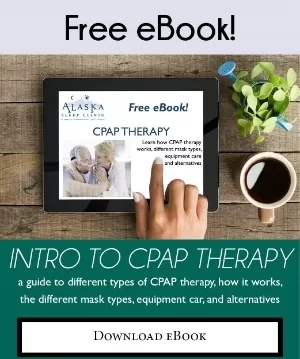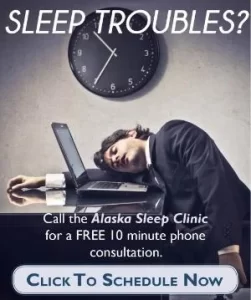Crashes requiring hospitalization of car drivers or passengers is due to drowsy driving. (AAA, 2010)
- One analysis estimated the cost of automobile accidents attributed to sleepiness to be between $29.2 to $37.9 billion. (Leger, 1994)
- (41%) admitted to having fallen asleep at the wheel at some point.; one in ten drivers (10%) reporting they did so within the past year. (AAA, 2010)
- More than one-quarter of drivers (27%) admitting they had driven while they were “so sleepy that [they] had a hard time keeping [their] eyes open” within the past month (AAA, 2010)
Researchers estimate that more than 70 million Americans suffer from a sleep disorder. (Institute of Medicine, 2005) One of the most serious consequences of insufficient sleep is traffic accidents due to drowsy driving. A recent study by the American Automobile Association (AAA) estimates that one out of every six (16.5%) deadly traffic accidents, and one out of eight (12.5%) crashes requiring hospitalization of car drivers or passengers is due to drowsy driving. (AAA, 2010) One analysis estimated the cost of automobile accidents attributed to sleepiness to be between $29.2 to $37.9 billion. (Leger, 1994)

The prevalent hazard of drowsy driving is underlined by the number of drowsy drivers that surveys reveal are still on the road. A recent AAA survey found that two out of every five drivers (41%) admitted to having fallen asleep at the wheel at some point, with one in ten drivers (10%) reporting they did so within the past year, and more than one-quarter of drivers (27%) admitting they had driven while they were “so sleepy that [they] had a hard time keeping[their] eyes open” within the past month.(AAA, 2010) In the National Sleep
Foundation’s Sleep in America 2009 poll, more than half of adults (54%) reported they have driven at least once while drowsy in the past year, with almost a third (28%) reporting that they do so at least once per month.
Commercial truck drivers are especially susceptible to drowsy driving. A congressionally mandated study of 80 long-haul truck drivers in the United States and Canada found that drivers averaged less than 5 hours of sleep per day. (Federal Motor Carrier Safety Administration, 1996)
It is no surprise then that the National Transportation Safety Board (NTSB) reported that drowsy driving was probably the cause of more than half of crashes leading to a truck driver’s death. (NTSB, 1990a,b) For each truck driver fatality, another three to four people are killed. (NHTSA, 1994)
Although certain segments of the population are more prone to drowsy driving, such as commercial truck drivers, shift workers, young men, people taking sedating medicines, or those with sleep disorders, drowsy driving is such a prevalent condition that “in many cases it is the average ‘driver next door’ who just happens to be putting in extra hours at work, adjusting to a new baby in the household, staying out late for a party, or trying to make it back home after an out-of-town trip,” noted one group of researchers. (Stutts, et al, 1999)
The consensus among drowsy driving experts is that in order to prevent many deadly crashes, it is critical to educate all people about the importance of adequate sleep and the dangers of not driving drowsy, with some experts calling drowsy driving a “silent killer” that needs a major public health and education campaign to counter. (Drobnich, 2005) Fortunately, drowsy driving is both preventable and treatable with certain appropriate measures, which will be discussed in this paper.
Need for sleep and its effects on driving
All people need between 7 and 9 hours of uninterrupted sleep a night to feel well rested and function at their fullest. (NHLBI, 2005) The body has built-in mechanisms to ensure we get that sleep, including a biochemical means of tracking how much time we spend sleeping or being awake. When a sleep debt builds up, this biochemical tally triggers excessive sleepiness and the urge to sleep.
In addition, natural circadian rhythms make us more likely to feel drowsy in the dark early hours of the day. This critical time of sleepiness occurs even if we get adequate sleep. (NHLBI, 2005) This peak in sleepiness corresponds to the number of sleep-related automobile accidents that occur in the early morning hours. (Pack et al 1995)
The sleep-wake cycle is inevitable. Although we can deny or mask the physiologically based urge to sleep, our sleepiness will become apparent when we are conducting monotonous tasks, such as driving on a monotonous highway. The boring task often does not cause fatigue as much as reveal or unmask underlying sleepiness. (Roth et al, 1994; NTSB 1995)
Studies have linked sleepiness and fatigue to decreases in vigilance, reaction time, memory, psychomotor coordination, information processing, and decision making, all of which are needed for safe driving. (Lyznicki et al, 1998) Sleepiness can impair driving performance as much or more so than alcohol, studies show.
The effects of sleepiness on driving performance are akin to that of a blood alcohol concentration close to that of the legal limit in most states in a well-rested person. (Dawson and Reid, 1997; Powell, 2001) In other words, driving sleepy is like driving drunk. Sleepiness not only causes people to fall asleep at the wheel, but also triggers repetitive head drops due to microsleeps of a few seconds in duration. (Powell and Chau, 2010)
Awareness of drowsy driving
Although people who fall asleep for more than a few minutes are often aware of those lapses in wakefulness, drivers may not be aware of shorter lapses and microsleeps, which can also have serious consequences when a quick reaction is needed to avoid high-speed crashes. (Powell and Chau, 2010) Most people also are not aware of how drowsiness affects their driving performance, even without falling asleep.
Studies also suggest that people cannot reliably detect how sleepy they are, and when they are likely to fall asleep, presumably because they either lack or do not pay attention to signs that sleep onset is likely. (FHWA, 1998; Filliatrault et al, 1996; Itoi et al, 1993)
People frequently deny how sleepy they are, and whether their sleepiness interferes with their driving. In one study, a man who had a crash and reported sleeping only 5 hours a day claimed that because he did not remember what happened, he must have “blacked out” rather than fallen asleep. Another driver from a sleep-related crash said “I wasn’t drowsy, I just fell asleep.” This study found that only about half of drivers in sleep-related crashes reported feeling drowsy before their crashes, with nearly one-quarter reporting that they felt “not at all drowsy.”(Stutts, 1999)
However, several telltale factors strongly suggest a sleep-related accident, including a vehicle leaving the roadway, and a lack of braking, skid marks, or other evidence that the driver made no attempt to avoid crashing. Police investigators often take that evidence into consideration when classifying an accident as sleep-related.(NHLBI, 1998a)
Research has revealed a few indicators of drowsiness and drowsy driving. (Papadelis et al, 2007; Mathis and Hess, 2009)These include:
- Frequent blinking, longer duration blinks and head nodding
- Having trouble keeping one’s eyes open and focused
- Memory lapses or daydreaming
- Drifting from one’s driving lane or off the road
Currently, there is no definitive physiologic test or detection system for drowsiness equivalent to the breath analyzers used to detect drunk driving.
Individual prevention of drowsy driving crashes
Experts agree that there is no substitute for sleep, and drivers should ensure they are well rested to prevent crashes. (Nguyen et al, 1998) Awareness of the signs of drowsiness might be helpful, but only if drivers attend to those signs by pulling off the road and getting sufficient sleep.
If that is not possible, studies suggest two interventions that are helpful: taking a short, 20-minute nap, and/or drinking two cups of coffee or other equivalently caffeinated beverages. Caffeine will improve alertness only for a short period of time, and should not be relied upon to make up for a sleep deficit, studies show. As one researcher put it “Sleep debt can only be paid back with sleep.” (Nguyen et al, 1998)
There is no evidence that the alertness enhancing medicine modafinil can reduce drowsy driving. In one small study, in which sleep-deprived individuals were given the drug and then tested on a driving simulator, modafinil reduced lane deviation, but had less effect on speed deviation, off-road incidents and reaction time, while self-assessments indicated that the drug gave the sleep-deprived participants false confidence in their driving abilities. (Gurtman et al, 2008)
There is also no evidence for anecdotal reports that opening car windows, stopping to stretch, or turning up the volume of a car radio can prevent drowsy driving crashes. (Nguyen et al, 1998)
Conclusion
Drowsy driving is a prevalent and serious public health issue that deserves more attention, education, and policy initiatives so a substantial amount of lives can be saved and disability averted due to drowsy driving accidents.
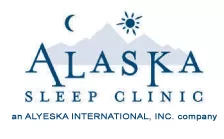





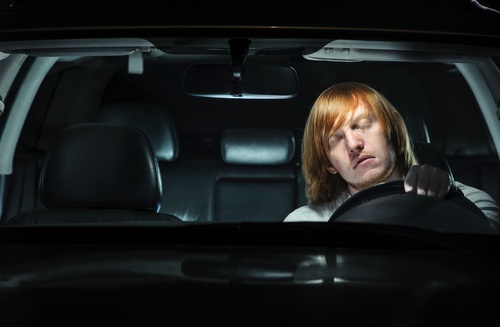
![trust-bbb_torchaward_graphics_TorchAwards_header_finalist[1]](https://www.alaskasleep.com/hs-fs/hubfs/trust-bbb_torchaward_graphics_TorchAwards_header_finalist%5B1%5D.png?width=2001&name=trust-bbb_torchaward_graphics_TorchAwards_header_finalist%5B1%5D.png)
